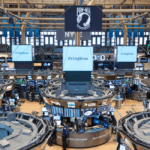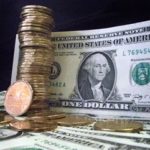The pound hovered near the strongest level in almost three years against the US dollar, after Bank of England reiterated in its inflation report yesterday that the economy is gaining traction, although the central bank also kept its pledge to maintain the benchmark interest rate at a record low.
GBP/USD touched a session high at 1.6654 at 09:54 GMT, after which consolidation followed at 1.6648, surging 0.31% for the day. Support was likely to be received at February 12th low, 1.6426, while resistance was to be encountered at January 24th high, 1.6668, also the pairs strongest since May 2nd 2011.
In its quarterly inflation report released yesterday, Bank of England raised its forecast for the UK economic growth in 2014 to 3.4% from 2.8% projected in November. The central bank also predicted that the UK economic growth in Q4 will be revised upwards to 0.9% from the 0.7% initially estimated by the statistics office, and projected a similar expansion in the three months through March.
BoE also said the unemployment rate will fall below 7% in the first quarter of this year, but at the same time underscored there was “scope to absorb spare capacity further before raising bank rate” from the current record-low 0.5%. BoE estimated an output gap between 1% and 1.5% of UK gross domestic product.
In 2013, the UK economy expanded at the strongest pace in six years, which pushed the unemployment rate to 7.1% during the three months to November, just above the 7% threshold that the Monetary Policy Committee (MPC) pledged to use as a benchmark for raising the record-low key interest rate. According to the UK Office for National Statistics (ONS), the lowest level of unemployment since May 2009.
Based on market players’ expectations for interest rates, with the first increase predicted to come in April 2015, BoE forecast inflation of 1.9% in the next three years, which is below the central bank target of 2%.
In addition, BoE’s policy makers said that once the jobless rate hits 7% during the first quarter of this year, it will ease its pace of decline. According to central bank’s estimates the UK medium-term equilibrium jobless rate is between 6% and 6.5%, less than the previous estimate of 6.5%.
The sterling has appreciated 9.2% in the past 12 months, marking the best performance among the 10 developed-nation currencies, which are tracked by Bloomberg Correlation-Weighted Indexes. At the same time, the US dollar has risen 3.4%.
Meanwhile, greenback’s demand was pressured earlier in the week following the new Federal Reserve Chairman Janet Yellen’s remarks that suggested monetary policy is likely to remain loose for a prolonged period of time.
On Tuesday, Janet Yellen told the Republican-controlled House Financial Services Committee, the Fed will “likely reduce the pace of asset purchases in further measured steps at future meetings”, if the labor market continues to recover and inflation rises.
She underscored “continuity” in the Federal reserve monetary policy, emphasizing that she strongly approves the approach of her predecessor, Ben Bernanke.
The current monthly bond-buying program was started in September 2012 and since then the US jobless rate has declined 1.5% to reach a 5-year low at 6.6% in January. However, according to Yellen the rate remains “well above levels” the central bank regards as consistent with maximum sustainable employment.
The Fed Chairman also reiterated that the pace of cutting back Fed stimulus was not on a “preset course”, and added the central bank planned to keep interest rates at zero “well past” the time the jobless rate falls below 6.5%.
The central bank announced its decision to reduce monthly monetary stimulus by 10 billion USD to 65 billion USD at the meeting on policy in January, underscoring that labor market indicators, which “were mixed but on balance showed further improvement”, while nation’s economic growth has “picked up in recent quarters.” Fed policymakers are to hold their next meeting on March 18th-19th.
The Federal Reserve will probably continue to pare stimulus by $10 billion at each policy meeting before exiting the program in December, according to a Bloomberg News survey of 41 economists, conducted on January 10th.
Retail sales index in the United States probably remained flat in January compared to December, according to the median estimate by experts, after a month ago sales rose 0.2%. The Census Bureau is expected to release the official numbers at 13:30 GMT today. Retail sales are closely watched, because they provide crucial information regarding the tendency in consumer spending in the United States, which, on the other hand, accounts for almost two thirds of nation’s Gross Domestic Product. Better than anticipated figures will certainly heighten the appeal of the greenback.
The number of initial jobless claims, an indicator for lay-offs in the country, probably decreased to 330 000 during the week ended on February 8th, from 331 000 in the preceding week. Official figures are to be announced at 13:30 GMT today.
Elsewhere, AUD/USD hit a session low at 0.8928 at 1:55 GMT, after which consolidation followed at 0.8938, plunging 1.00% for the day. Support was likely to be received at February 10th low, 0.8907, while resistance was to be met at February 12th high and also the highest point since January 13th, 0.9068.





